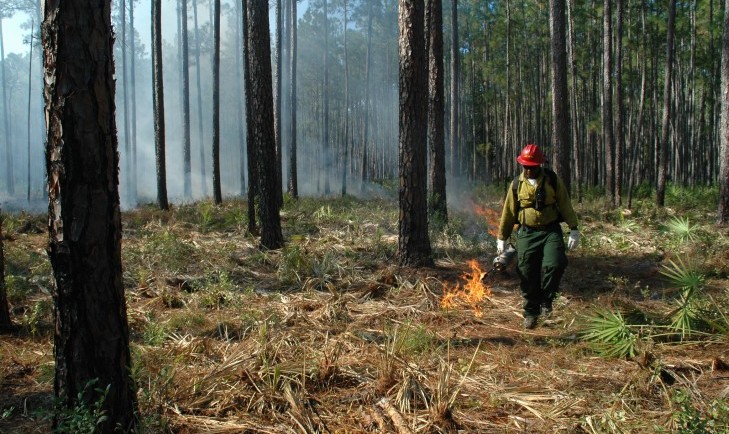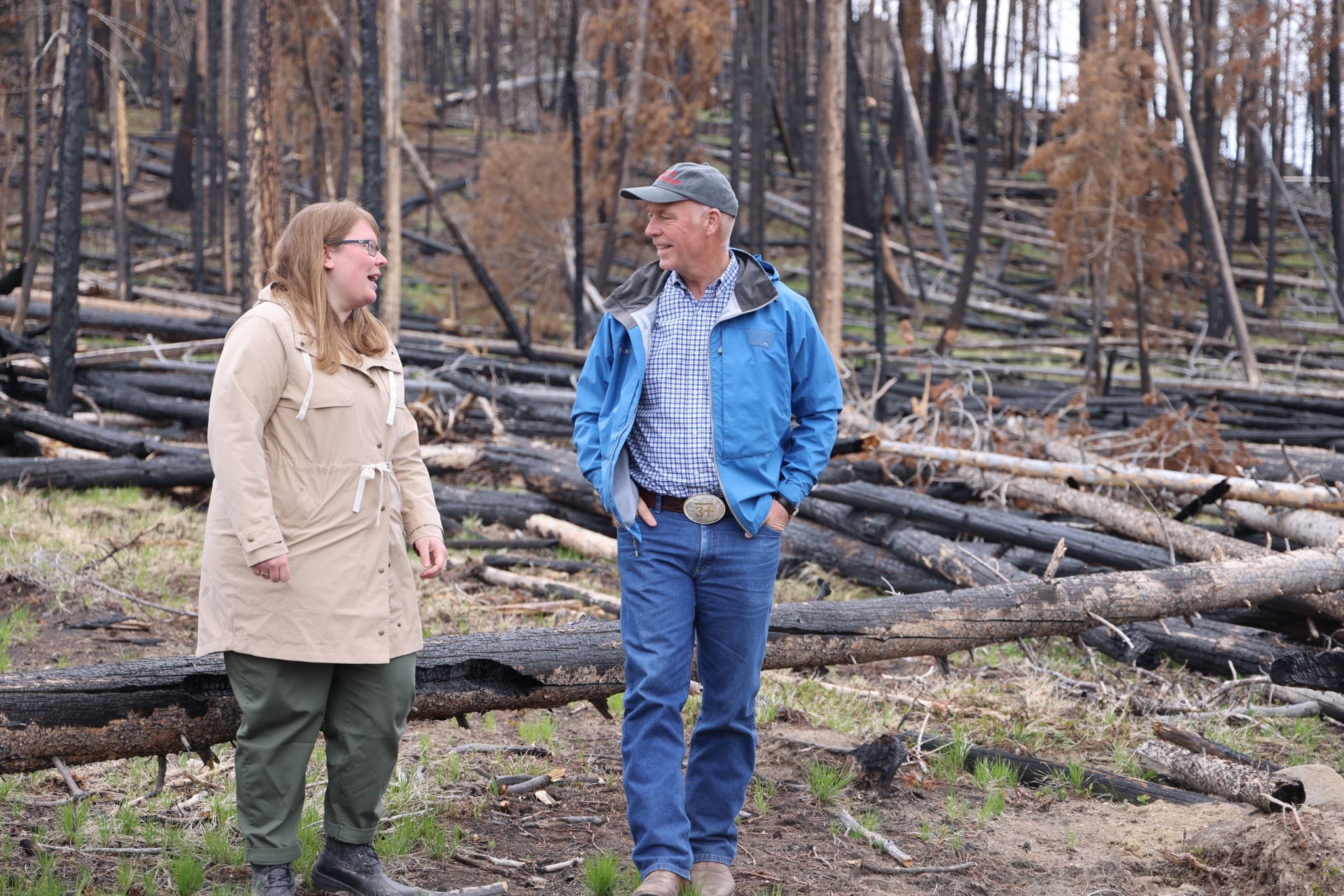03/07/24
Best of the West: Preparing for fire season; Licensing advanced nuclear reactors; National Parks visitation hits pre-pandemic levels; Expanding geothermal power in Hawaii, and pandas in California

The Western Governors' Association keeps you updated on the latest news in the West. Here are the top stories for the week starting March 4, 2024. (Photos courtesy of the US Forest Service, and Cedar).
It’s only March, but the recent wildfire in Texas is a stark reminder of the growing threat of wildfire. With the traditional fire season just a few months away, Western states are working closely with the federal government to ramp up fire mitigation and resilience projects.
The U.S. Department of Agriculture recently announced $500 million in funding to confront the nation's ongoing wildfire crisis. Agriculture Secretary Tom Vilsack said in a release the funding will expand work on the USDA's Forest Service's Wildlife Strategy, bringing the total investment in the strategy to a historic $2.4 billion.
Just a couple of weeks before that announcement, the Bureau of Land Management announced a $41 million investment for ecosystem restoration. About half of the funds ($20.5 million) are slated for 26 projects in eight states under Good Neighbor Authority, which allows the BLM to collaborate with Tribal Nations and State governments to do restoration work on lands across multiple jurisdictions.
That same day (Feb. 8), the U.S. Department of the Interior also announced more than $157 million for 206 ecosystem restoration projects in 48 states, Washington, D.C., and the U.S. Territories. Half of all funding ($22 million) will be spent on BLM’s Restoration Landscapes, continuing the Bureau’s efforts to invest in these places and address threats to wildlife, recreation visitors, and communities.
With billions available in funding, several national forests also announced plans to revamp their management plans with a focus on active management.
For the first time in nearly three decades, the Forest Service announced that it is developing a new Tongass forest plan.
“In 1997, climate change wasn’t even a thought in the forest plan – it wasn’t even really contemplated,” Southeast Alaska’s Deputy Forester Chad VanOrmer, said. “And here we are today where it’s really frontline, headline news and we have a forest plan currently that doesn’t really prepare ourselves for it.”
A key part of that plan, he said, will be to strengthen relationships with community organizers and tribal governments by building upon the work of Southeast Sustainability Strategy, which sent millions in funding to tribal and Indigenous organizations for sustainable development projects like forest restoration, trail work, and Indigenous cultural education projects.
The Lolo National Forest is also currently in the process of revising its land management plan.
The success of this kind of state-federal collaboration has been well documented and many western states are eager to expand their partnership.
 Governor Greg Gianforte announced this week that the State of Montana reached its annual goal for acres placed under active forest management (36,000 acres) for the third consecutive year. The success is at least in part due to the fact that in 2023, Governor Gianforte signed House Bill 883 into law to boost funding to increase DNRC’s capacity for forest management projects across the state via Good Neighbor Authority.
Governor Greg Gianforte announced this week that the State of Montana reached its annual goal for acres placed under active forest management (36,000 acres) for the third consecutive year. The success is at least in part due to the fact that in 2023, Governor Gianforte signed House Bill 883 into law to boost funding to increase DNRC’s capacity for forest management projects across the state via Good Neighbor Authority.
With a similar goal in mind, Colorado Governor Jared Polis announced an additional $6.5 million in grants for wildfire mitigation and forest health management projects via Colorado's Strategic Wildfire Action Program. According to the Governor's Office, Polis' administration has committed about $145 million in state funds and leveraged millions more in federal funds for forest health and wildfire mitigation work. To date, it has funded 83 wildfire mitigation projects and supported fuel reduction projects and critical forest restoration.
Nuclear-ed for Landing: The Nuclear Regulatory Commission unveiled a long-awaited proposal aimed at speeding up licensing for advanced nuclear reactors critical to creating a zero-emissions grid. The NRC’s “Part 53” rule would create a new category of licensing for the kind of smaller reactors the power industry has been trying to get off the ground for decades. If finalized, the rule could make the notoriously complex and lengthy licensing process easier for these new reactors and allow them to scale up more quickly. The proposal “marks a major step forward for the agency and risk-informed regulation, a real evolution of our regulatory frameworks,” NRC Chair Chris Hanson, said.
National Park Visitation: The National Park Service announced that the county’s 400 national parks reported a total of 325.5 million recreation visits in 2023, an increase of 13 million or 4% over 2022. This brings the total number of visits to national parks back to pre-pandemic levels. In addition, NPS data shows that visitation is increasing in the off-seasons at many parks, with more visits in the spring and fall than seen in years past.
Geothermal Exploration: With a goal to power 100% of Hawaii with renewable energy by 2045, the state's Energy Office announced this week that it is launching an island-wide search for additional sources of geothermal power. “For me, it’s a real priority for this office to better understand how far we can go with geothermal,” Hawaii’s Chief Energy Officer Mark Glick, said.
 Return of the Pandas: The San Diego Zoo Wildlife Alliance announced that it signed a cooperative agreement with the China Wildlife Conservation Association and filed a permit application with the U.S. Fish and Wildlife Service to bring two pandas to the San Diego Zoo by the end of the summer.
Return of the Pandas: The San Diego Zoo Wildlife Alliance announced that it signed a cooperative agreement with the China Wildlife Conservation Association and filed a permit application with the U.S. Fish and Wildlife Service to bring two pandas to the San Diego Zoo by the end of the summer.
“California and China share deep cultural and economic ties, and we look forward to the opportunity to again welcome these iconic bears to the Golden State,” Governor Gavin Newsom, said.